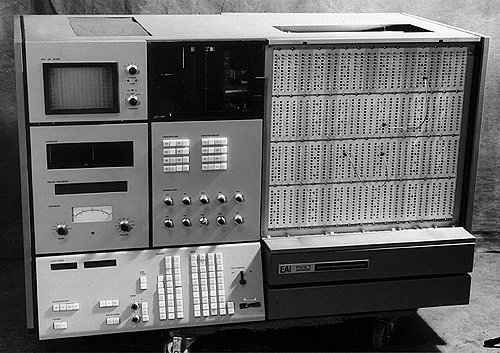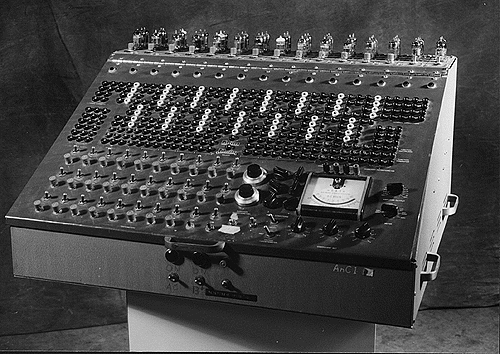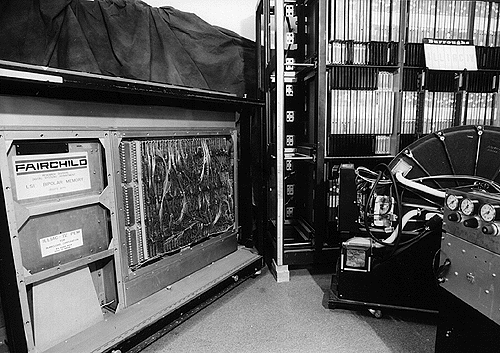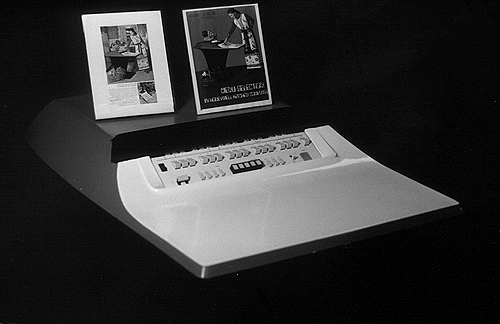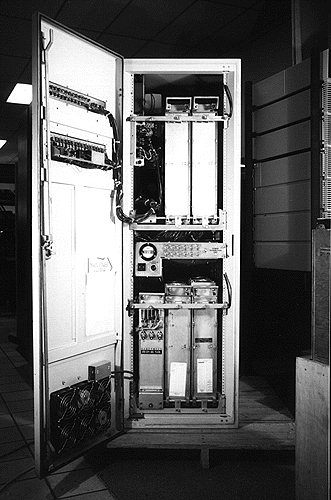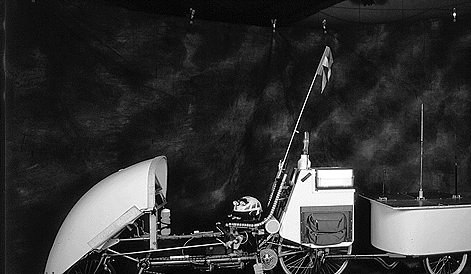"A Walk Through 'Visible Storage'", section 6 of 6, by LEN SHUSTEK
From "CORE 2.3", a publication of The Computer History Museum.
Forward, Backword, Table of Contents, Docent Page
ALTERNATE ROUTES AND DEAD ENDS
Although the digital electronic computer now
dominates, it wasn't always clear that binary
was the best way to compute. From the 1920s
to the 1960s "analog computers" represented
numbers in a much more direct way than an
abstract string of bits: a signal of 5.2 volts
could be the number 5.2. You could add,
subtract, multiply, and divide at blazingly fast
electronic speeds. But the accuracy of the
results and the complexity of the
computational sequences was limited, so stand-
alone analog computers, like these made by
EAI
The Museum collection contains many other
instructive dead-ends, although not all of them were failures. The
Illiac IV
Some computers in the collection always bring a smile to visitor's faces.
This
"Kitchen Computer"
